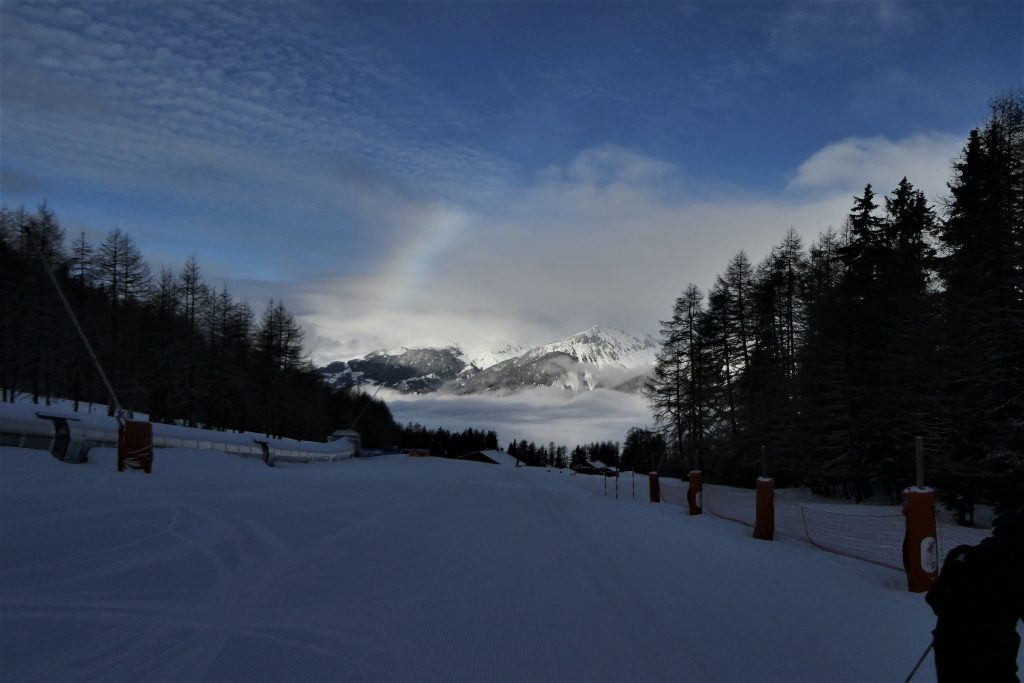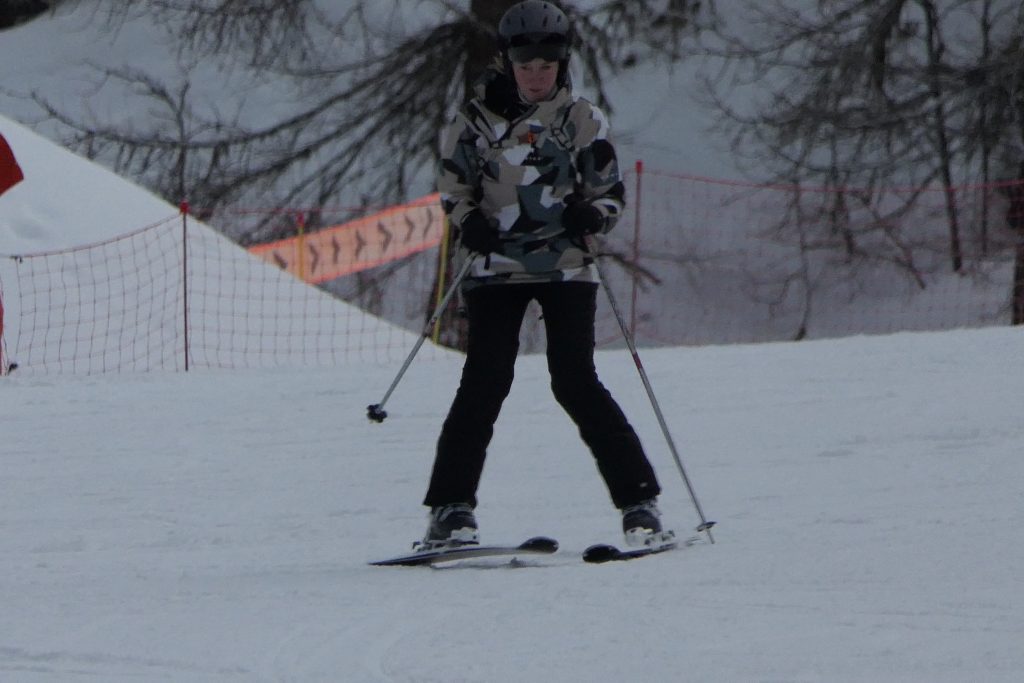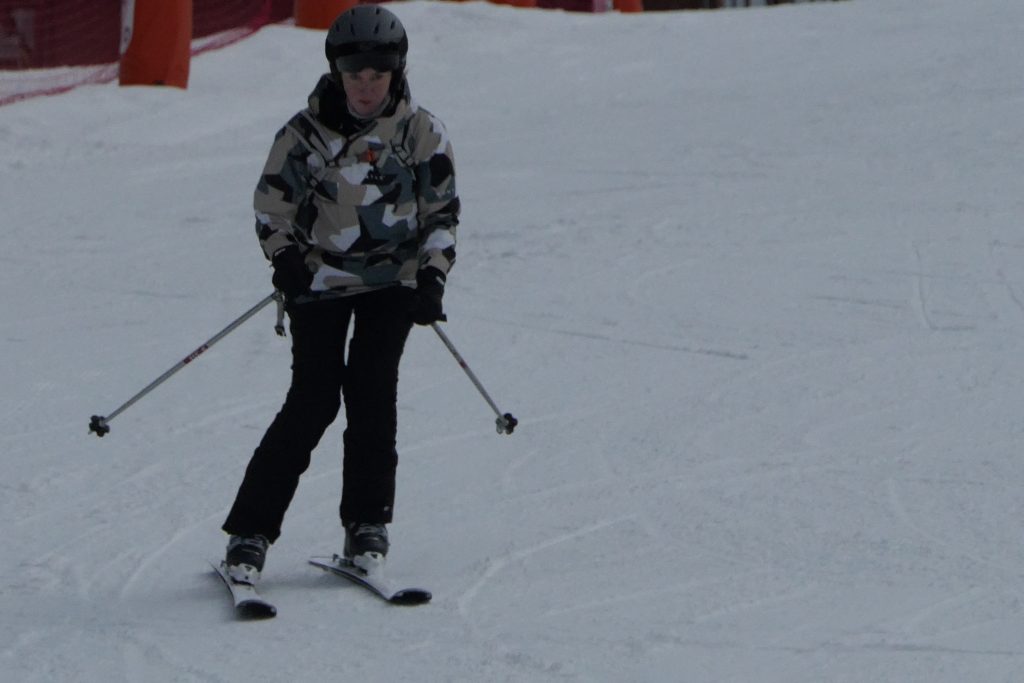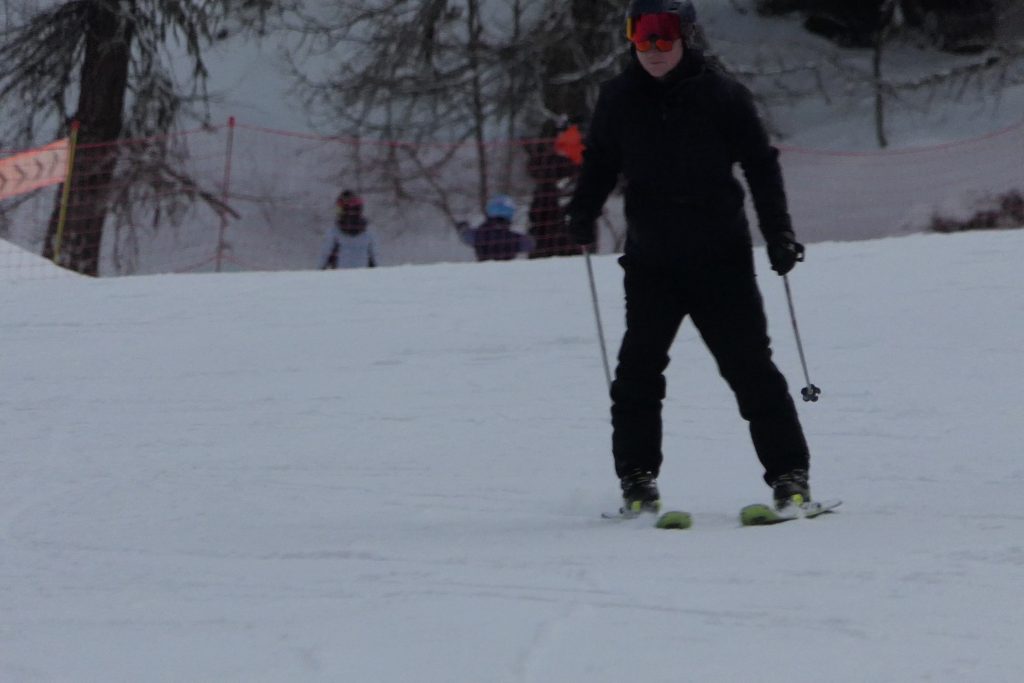We started off the session with more skating around on the flat – working on using gravity for propulsion – falling forwards and sideways simultaneously in between the skis.
On the slope we initially worked on skating out of the fall line and then progressed to working on complete turns into and out of the fall line. It soon became evident that Lindsay wasn’t comfortable at taking this leap of faith for the time being and in addition the motion of the centre of mass still wasn’t a clearly fixed idea for her. This sort of confusion happens when the body and unconscious (perhaps trained) physical actions take over regardless of what your initial intentions are! Lindsay’s instincts were accurate in warning her that she wasn’t ready for this. Fortunately I have a method using a modified snowplough that could be recruited to sort this all out.

Braking Plough (Instead of Racing Plough!)
There is one key fundamental issue in skiing – the Centre of Mass is the driver. When a slow snowplough prioritises putting the weight on the outside leg – because it is a static stance – then the Centre of Mass has to be forced outward from the turn over that outside leg. That’s the fundamental flaw in using slow snowploughs for teaching beginners or for reeducation. In contrast in all skiing the Centre of Mass must always move into the new turn and keep working towards the centre until it’s time to complete the turn. The skill in skiing concerns the many ways to move and control the Centre of Mass in relationship with the skis.
Our Goal was to move the Centre of Mass into the turn over the inside ski and this flattens that ski slightly allowing it to side slip while progressively pivoting into the turn and acting as a brake with most of the body weight on this inside leg. Just after pointing the plough directly downhill the outside ski will naturally take up the weight as it comes around beneath (downhill of) the skier. This means the load is always supported by one ski or the other on its uphill edge acting as a brake – allowing the correct motion of the Centre of Mass to be developed ready for dynamics/speed to take over the job of providing stability and security.
The new objective was to develop security with the plough and gradually replace that with dynamics.
One of the keys to good dynamics is an early extension of the uphill leg to push over the body into the turn. The uphill leg must feel firmly anchored to the ground and this initiates the turn – you don’t wait until pressure builds on that leg or ski as it comes around – you generate the pressure with this muscular impulse while falling both sideways and slightly forward. It helps to be on the balls of the feet for this – holding the ankle stiff while pressing against the fronts of the boots. (Turning power comes predominantly from the fronts of the skis!). Getting early pressure on the uphill ski while it is still slightly on the uphill edge means that the tail cant be stemmed outwards – all effort then goes correctly into moving the Centre of Mass downwards and the skis following from the fronts.


Falling inward is relatively safe compared to falling outward!
Keep the head up and looking forward – the ground rushes at you if you stare at it!

Robin was understanding and executing dynamics clearly. Skating skills need some work but the underlying issue there appears to be that the stance is the exact opposite of Lindsay’s with the knees outwards. Skating requires the adductor muscles to be active – those upper leg muscles that are used to squeeze the knees together. Both Lindsay and Robin have the equipment aligned correctly so there is no interference there – when the legs are at their strongest (with their bone structures) the boot soles are parallel (feet hip width apart).

